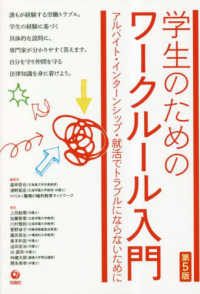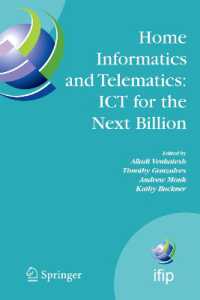Full Description
Readers shouldn't need to struggle to understand documents. Whether they are reading a form to request government services, a contract for a mobile phone plan, or a patient information leaflet for prescription medication, people deserve to understand the documents that they read. Social justice, risk management, and a desire to extend the reach of the message are driving the fast-growing demand for plain language documents, and translators are well placed to help meet this demand. Written by an experienced translator and translation educator, Plain Language for Translators responds to the need for an accessible introduction to the main issues involved in designing, developing, and evaluating plain language documents in communicative settings such as government, legal, health, and science communication. It details the benefits of providing plain language documents and explains how translators' skills can be transferred to plain language writing.
This book provides practical guidance on implementing and evaluating the plain language principles of relevance, findability, understandability, and usability, as well as information about pertinent tools. Closely related concepts such as document design, inclusive language, easy language, and controlled language are also explored.
Each chapter includes key questions, discussion topics, activities, and suggestions for further reading - all designed to empower translators to develop the skills needed to work as plain language practitioners.
Contents
List of Figures
List of Tables
Acknowledgements
Series editor forward
Abbreviations
Introduction
Chapter 1. Basic concepts and terms in plain language
Chapter 2. Brief history and key motivations for plain language
Chapter 3. Principles and techniques for plain language
Chapter 4. Inclusive language
Chapter 5. Plain language writing and document design
Chapter 6. Evaluating plain language
Chapter 7. Plain language in different communicative settings
Chapter 8. Easy language
Chapter 9. Controlled language
Conclusion
Glossary
Bibliography
Index








